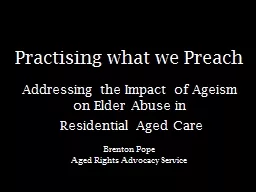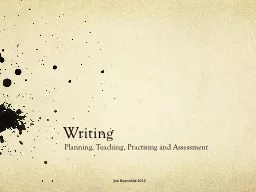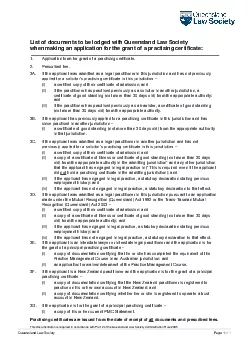PPT-Practising what we Preach
Author : faustina-dinatale | Published Date : 2017-05-06
Addressing the I mpact of Ageism on Elder Abuse in Residential A ged Care Brenton Pope Aged Rights Advocacy Service Whenever you find yourself on the side of the
Presentation Embed Code
Download Presentation
Download Presentation The PPT/PDF document "Practising what we Preach" is the property of its rightful owner. Permission is granted to download and print the materials on this website for personal, non-commercial use only, and to display it on your personal computer provided you do not modify the materials and that you retain all copyright notices contained in the materials. By downloading content from our website, you accept the terms of this agreement.
Practising what we Preach: Transcript
Download Rules Of Document
"Practising what we Preach"The content belongs to its owner. You may download and print it for personal use, without modification, and keep all copyright notices. By downloading, you agree to these terms.
Related Documents














